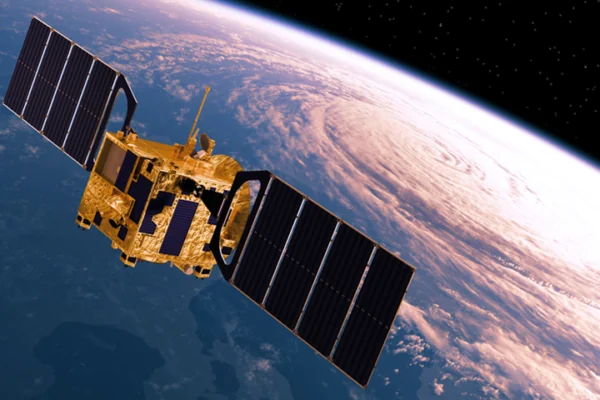5 Key Ways Simulation Enables Innovation in Space Technology


Designing and optimizing optical systems such as telescopes, cameras, and spectrometers are essential for space missions, where precision in capturing and transmitting light is critical. Ansys Speos and Ansys Zemax are key tools in this process, enhancing the performance of lenses, mirrors, and other optical components. These tools also simulate light propagation and scattering through various media and surfaces, ensuring that optical systems function effectively in the challenging environment of space.
 Spaceborne Lidar Systems
Spaceborne Lidar SystemsSpaceborne Lidar refers to Lidar systems that are deployed on satellites or spacecraft to perform remote sensing tasks such as Earth observation, atmospheric monitoring, and planetary mapping. These systems provide high-resolution, three-dimensional data of the Earth’s surface and other celestial bodies and offer unparalleled insights into topography, vegetation, ice cover, and atmospheric composition.
Designing spaceborne Lidar requires overcoming unique challenges posed by the space environment such as extreme temperatures, radiation, and the vacuum of space. Advanced simulation tools like those provided by Ansys are crucial for optimizing these systems, ensuring they can operate reliably in space, capture precise data over vast distances, and withstand the rigors of launch and space travel.
Ansys tools are used to design and simulate Lidar systems for space applications, including Earth observation and planetary mapping. These simulations ensure the system can accurately capture data from long distances in the harsh environment of space. Find out how.

Photonic Integrated Circuits (PICs) are increasingly being considered for space applications due to their potential to revolutionize communication, sensing, and signal processing systems in space missions. PICs integrate multiple photonic functions on a single chip, offering significant advantages in terms of size, weight, power consumption, and reliability—key factors for spaceborne systems. In space, where traditional electronic components can be vulnerable to radiation and extreme temperature variations, PICs provide enhanced performance and resilience. They can be used in high-speed optical communication systems, enabling faster data transmission between spacecraft and Earth. Additionally, PICs are vital for advanced sensing applications, such as Lidar, where they can improve the accuracy and efficiency of optical systems. The compact and robust nature of PICs makes them ideal for deployment in the harsh space environment, where minimizing payload weight and maximizing functionality are critical. As space missions become more complex and data-intensive, PICs are poised to play a central role in enabling the next generation of space technology
PIC Design and Simulation: Ansys Lumerical provides tools for designing and simulating photonic integrated circuits, which are used in high-speed data communication, sensing, and signal processing in space applications. These circuits are crucial for miniaturization and efficiency in space systems.

EMC/EMI challenges are particularly severe for space applications due to the complex interaction of multiple high-frequency systems operating in close proximity within a spacecraft. The absence of an atmosphere, which normally helps dissipate electromagnetic waves, combined with the harsh radiation environment, exacerbates the potential for electromagnetic interference. This can lead to critical issues such as communication disruptions, malfunctioning of sensitive electronics, and compromised mission success. Additionally, the unique conditions of space—such as extreme temperatures and vacuum—can alter material properties, further complicating the design of effective shielding and grounding strategies. Ensuring electromagnetic compatibility in this environment requires rigorous simulation, careful component design, and comprehensive testing to mitigate these risks.
ANSYS tools, such as HFSS and SIwave, are invaluable in addressing EMC/EMI challenges in space applications by providing advanced simulation capabilities that predict and mitigate electromagnetic interference. HFSS enables detailed modeling of electromagnetic fields and interactions within complex spacecraft geometries, helping to optimize shielding, grounding, and component placement to reduce EMI. SIwave complements this by analyzing signal integrity and power distribution networks, ensuring that cables, harnesses, and PCB layouts minimize crosstalk and radiated emissions. These tools allow engineers to simulate the harsh space environment accurately, including material property changes due to extreme conditions, ensuring robust and reliable EMC performance throughout the spacecraft’s mission.

CubeSats are miniaturized satellites, typically built in units of 10x10x10 cm (known as 1U), and have become a popular option for space missions due to their low cost and modular design.
These nanosatellites are often used for scientific research, technology demonstration, Earth observation, and communication purposes, and can be are equipped with cameras or multispectral imagers to monitor environmental changes, land use, weather patterns, and disaster monitoring. These optical systems need an accurate and reliable method for the development of it’s optical design, the opto-mechanical packaging of the system, and the modeling of structural and thermal impacts that the system will experience in-orbit. Read more about how Ansys Zemax can streamline this design and analysis workflow.
